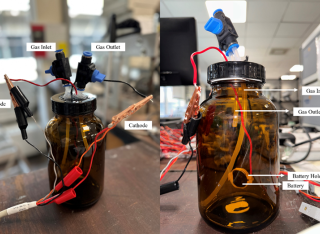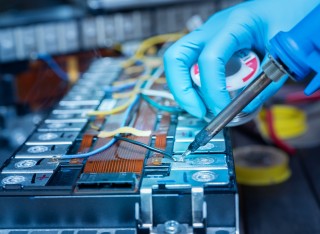
Dr Siddharth Gadkari
Academic and research departments
School of Chemistry and Chemical Engineering, Institute for Sustainability.About
Biography
Dr. Siddharth Gadkari is a Chemical Engineer by training whose career is characterised by a deep commitment to advancing sustainable technologies. With a robust academic foundation and extensive experience in both academic research and industry, Dr. Gadkari has cultivated a specialized skill set at the dynamic intersection of computational modelling and experimental methodologies. His work is primarily focused on the critical domains of waste valorisation and the circular economy, addressing some of the most pressing environmental and economic challenges of our time.
Areas of specialism
University roles and responsibilities
- Department Wellbeing Champion
- Department representative of Early Career Researchers' Forum
My qualifications
Affiliations and memberships
Postdoctoral positions:
Postdoctoral opportunities are currently available to work on experimentation and modeling (dynamic/LCA/TEA) of bioelectrochemical systems or other sustainable energy technologies.
Those interested in postdoctoral research are encouraged to inquire about possible opportunities, national or international postdoctoral fellowships (Newton, Commonwealth Royal Commission, etc.). If your research interests match with the current work in our Lab, we can host you at Surrey for any fellowship applications.
Newton International Fellowships: https://royalsociety.org/grants-schemes-awards/grants/newton-international/
Royal Commission for the Exhibition of 1851: https://www.royalcommission1851.org/awards/?award=research
NERC Independent Research Fellowships: https://nerc.ukri.org/funding/available/fellowships/irf/
EPSRC Fellowships: https://epsrc.ukri.org/skills/fellows/
ResearchResearch interests
Our group's priority is to conduct rigorous, meaningful and impactful analysis using experimental and numerical approaches to develop new sustainable technologies for an effective transition to circular economy.
At present, our group is working in the following areas:
- Optimisation of bioelectrochemical systems such as microbial fuel cells, microbial electrolysis cells, microbial electrosynthesis systems, etc. for wastewater treatment, conversion of CO2 to utility chemicals, hydrogen production, and biosensing applications.
- Resource recovery from wastewater using bioelectrochemical and physico-chemical approaches.
- Recycling of Lithium-ion batteries.
- Li-CO2 battery development.
- Thermo-chemical and bio-chemical technological routes for converting biomass/wastewater to energy and fuels.
- Life cycle and techno-economic analysis (LCA-TEA) of different processes focusing on waste-to-energy/chemicals production.
Research projects
In this project, we will design and analyse a microbial electrochemical system for the recovery of Li from actual LiB waste, focusing on the main aspects affecting the process, such as the microorganisms and their capabilities, the design of the system (configuration, types of electrodes, catalysts, metal concentration, etc.), and the operational conditions that produce increased yields and efficiencies of Li recovery. We will screen diverse microbial species and communities for their capability to remove Li from the waste and test them in different reactor designs (microbial fuel cell, microbial electrochemical cell, microbial desalination cell and tubular reactors). We will conduct a detailed life cycle assessment and techno-economic analysis to evaluate the environmental and economic implications of the process, which will allow us to explore the feasibility of economic scales of operation and understand the role of bio-based metal recycling in the circular economy.
The combination of experimental approaches with sustainability assessment will provide a clear understanding of the system and generate strategies for scale-up. The project will deliver an optimal biotechnology-based solution for attaining high purity and yield of Li from LiB waste. Recovered Li can be returned to LiB, which will be proven by testing its quality to complete the economic circularity of Li.
To achieve a sustainable circular economy, recovery and recycling of useful resources needs to be prioritized. Metal contaminated industrial waste streams post great health and ecological concerns, but they are also a valuable source for recovery of useful resources like metals. Traditional metal recovery technologies involve high energy consumption and are chemically intensive. Bioelectrochemical systems such as microbial fuel cells (MFCs) have emerged as a new sustainable technology platform for removal and recovery of metal ions from industrial wastewaters. MFCs combine treatment of organic wastewater by microbial biofilms at the anode with the reduction of metal ions from metal-laden waste streams at cathode. So far, recovery of several metal ions like Cobalt, Chromium, Copper, Gold, Silver, Selenium, Vanadium, Zinc, etc., has been demonstrated. Though promising, metal recovery using MFCs is a complex process and depends on large number of operational and design parameters such as, pH, redox potential of the metal ion, type of electrode materials, initial concentration of metal ions in the wastewater, etc. To optimize the process and maximize metal recovery using MFCs, more research is needed to understand the role of different determinant factors influencing the process. In this international collaborative project, we combine the strengths of two world leading research groups based in UK and India, to develop a robust predictive optimisation tool that can be used to determine the design and operating conditions to maximize the recovery of metals from wastewaters.
In this project we are developing comprehensive mathematical models that can provide deeper insight on the governing mechanisms of bioelectrochemical systems. Such numerical models will compliment experiments and help to develop this technology towards commercialisation at a reduced cost and time.
The gasification of biomass wastes represents a major thermochemical route to produce a high energy value syngas from a source which is renewable and CO2-neutral. However, one of the major issues in the gasification process is contamination of the product syngas with tar. Tar is the key problem for biomass gasification and is a complex mixture of condensable hydrocarbons. The formation of tar causes major process and syngas end-use problems, including tar blockages, plugging and corrosion in downstream fuel lines, filters, engine nozzles and turbines.
This proposal seeks to develop a novel gas cleaning process based on low temperature plasma/catalytic technology to produce a clean, high quality syngas from the gasification of waste biomass. Gasification of the biomass will be investigated in an existing small-pilot scale fluidised bed gasifier, modified to include a downstream plasma/catalytic syngas cleaning process. Experimental and detailed analytical work developing the coupled biomass gasification-gas cleaning process will enable a mechanistic understanding of the tar reduction process and will be extended by CFD modelling of model tar compounds. Process modelling and simulation of the combined biomass gasification-plasma/catalytic gas clean-up sytem will build a foundation for process analysis, optimal design and operation to facilitate exploitation of this innovative technology development.
Research collaborations
Newcaslte University
Harbin Institute of Technology, China
University of Liverpool
Council Of Scientific And Industrial Research–Indian Institute Of Chemical Technology (CSIR-IICT)
University in Girona, Spain
EXTERNAL ROLES
Editorial and Peer Review
2024-25: Reviewer for Natural Sciences and Engineering Research Council of Canada
2024: Panellist, NERC Pushing the Frontiers
2021+: Member, UKRI Future Leaders Fellowship Peer Review College, EPSRC Peer Review Associate College, NERC Peer Review College
2024: Editorial Board Member for Scientific Reports, Discover Applied Sciences
Research interests
Our group's priority is to conduct rigorous, meaningful and impactful analysis using experimental and numerical approaches to develop new sustainable technologies for an effective transition to circular economy.
At present, our group is working in the following areas:
- Optimisation of bioelectrochemical systems such as microbial fuel cells, microbial electrolysis cells, microbial electrosynthesis systems, etc. for wastewater treatment, conversion of CO2 to utility chemicals, hydrogen production, and biosensing applications.
- Resource recovery from wastewater using bioelectrochemical and physico-chemical approaches.
- Recycling of Lithium-ion batteries.
- Li-CO2 battery development.
- Thermo-chemical and bio-chemical technological routes for converting biomass/wastewater to energy and fuels.
- Life cycle and techno-economic analysis (LCA-TEA) of different processes focusing on waste-to-energy/chemicals production.
Research projects
In this project, we will design and analyse a microbial electrochemical system for the recovery of Li from actual LiB waste, focusing on the main aspects affecting the process, such as the microorganisms and their capabilities, the design of the system (configuration, types of electrodes, catalysts, metal concentration, etc.), and the operational conditions that produce increased yields and efficiencies of Li recovery. We will screen diverse microbial species and communities for their capability to remove Li from the waste and test them in different reactor designs (microbial fuel cell, microbial electrochemical cell, microbial desalination cell and tubular reactors). We will conduct a detailed life cycle assessment and techno-economic analysis to evaluate the environmental and economic implications of the process, which will allow us to explore the feasibility of economic scales of operation and understand the role of bio-based metal recycling in the circular economy.
The combination of experimental approaches with sustainability assessment will provide a clear understanding of the system and generate strategies for scale-up. The project will deliver an optimal biotechnology-based solution for attaining high purity and yield of Li from LiB waste. Recovered Li can be returned to LiB, which will be proven by testing its quality to complete the economic circularity of Li.
To achieve a sustainable circular economy, recovery and recycling of useful resources needs to be prioritized. Metal contaminated industrial waste streams post great health and ecological concerns, but they are also a valuable source for recovery of useful resources like metals. Traditional metal recovery technologies involve high energy consumption and are chemically intensive. Bioelectrochemical systems such as microbial fuel cells (MFCs) have emerged as a new sustainable technology platform for removal and recovery of metal ions from industrial wastewaters. MFCs combine treatment of organic wastewater by microbial biofilms at the anode with the reduction of metal ions from metal-laden waste streams at cathode. So far, recovery of several metal ions like Cobalt, Chromium, Copper, Gold, Silver, Selenium, Vanadium, Zinc, etc., has been demonstrated. Though promising, metal recovery using MFCs is a complex process and depends on large number of operational and design parameters such as, pH, redox potential of the metal ion, type of electrode materials, initial concentration of metal ions in the wastewater, etc. To optimize the process and maximize metal recovery using MFCs, more research is needed to understand the role of different determinant factors influencing the process. In this international collaborative project, we combine the strengths of two world leading research groups based in UK and India, to develop a robust predictive optimisation tool that can be used to determine the design and operating conditions to maximize the recovery of metals from wastewaters.
In this project we are developing comprehensive mathematical models that can provide deeper insight on the governing mechanisms of bioelectrochemical systems. Such numerical models will compliment experiments and help to develop this technology towards commercialisation at a reduced cost and time.
The gasification of biomass wastes represents a major thermochemical route to produce a high energy value syngas from a source which is renewable and CO2-neutral. However, one of the major issues in the gasification process is contamination of the product syngas with tar. Tar is the key problem for biomass gasification and is a complex mixture of condensable hydrocarbons. The formation of tar causes major process and syngas end-use problems, including tar blockages, plugging and corrosion in downstream fuel lines, filters, engine nozzles and turbines.
This proposal seeks to develop a novel gas cleaning process based on low temperature plasma/catalytic technology to produce a clean, high quality syngas from the gasification of waste biomass. Gasification of the biomass will be investigated in an existing small-pilot scale fluidised bed gasifier, modified to include a downstream plasma/catalytic syngas cleaning process. Experimental and detailed analytical work developing the coupled biomass gasification-gas cleaning process will enable a mechanistic understanding of the tar reduction process and will be extended by CFD modelling of model tar compounds. Process modelling and simulation of the combined biomass gasification-plasma/catalytic gas clean-up sytem will build a foundation for process analysis, optimal design and operation to facilitate exploitation of this innovative technology development.
Research collaborations
Newcaslte University
Harbin Institute of Technology, China
University of Liverpool
Council Of Scientific And Industrial Research–Indian Institute Of Chemical Technology (CSIR-IICT)
University in Girona, Spain
EXTERNAL ROLES
Editorial and Peer Review
2024-25: Reviewer for Natural Sciences and Engineering Research Council of Canada
2024: Panellist, NERC Pushing the Frontiers
2021+: Member, UKRI Future Leaders Fellowship Peer Review College, EPSRC Peer Review Associate College, NERC Peer Review College
2024: Editorial Board Member for Scientific Reports, Discover Applied Sciences
Supervision
Postgraduate research supervision
Primary Supervisor:
PhD - Anna Salvian (Working on development of biosensors (based on Microbial Fuel Cells))
PhD - Mahsa Masoudi (Working on Li-CO2 batteries)
PhD - Maano Tshimange (Working on membrane separation processes to recover Phosphorus from wastewater)
PhD - Rendra Hafyan (Food Waste Valorisation - Developing a decision making platform based on environmental, economic and social perspectives)
Co-Supervisor:
PhD - Fatemeh Hamidavi (Removal of microplastic fibers and pharmaceuticals from wastewater by ultrafiltration and nanofiltration membranes)
PhD - Ning Mao (Understanding the behaviour of Lithium-ion batteries under overcharge)
PhD - Tengfei He (Thermal runaway behaviour of lithium-ion battery during charge/discharge processes)
PhD - Linquan Gong (Working on safe design of solid state electrolyte for Lithium metal batteries)
PhD - Raymond Atughwe (Modelling Optimal Future Energy Systems Considering International Renewables Trading And Long-Range Transmission)
Sustainable development goals
My research interests are related to the following:

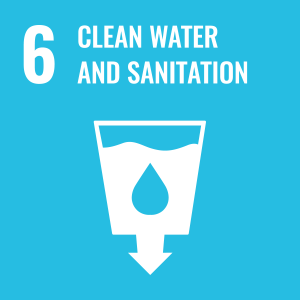
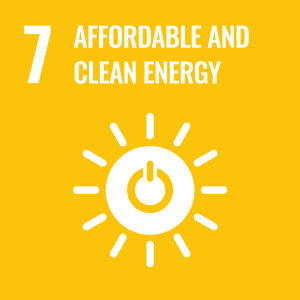
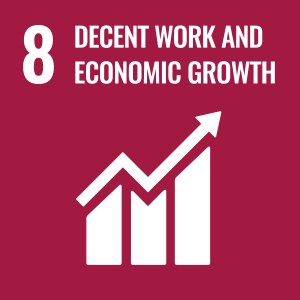
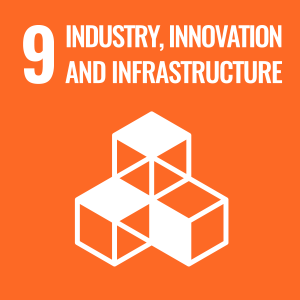
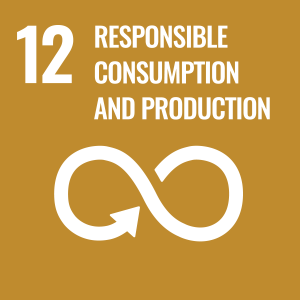


Publications
Single-ion conducting polymer electrolytes (SICPEs) are promising candidates for next-generation batteries due to their high lithium-ion transference number, which approaches unity. While their relatively low lithium-ion conductivity can be significantly enhanced by incorporating sufficient amounts of plasticizers, their thermal conductivity – crucial for effective thermal management in batteries – has received comparatively little attention. Adequate thermal conductivity is essential for rapid heat dissipation, helping to prevent heat accumulation that could potentially lead to thermal runaway. To investigate the conductivity behaviour of SICPEs, we performed both equilibrium and non-equilibrium Molecular Dynamics simulations to examine lithium-ion conductivity and thermal conductivity of modified polyethylene terephthalate–based SICPE in the presence of ethylene carbonate plasticizers. The simulated lithium-ion conductivities of SICPEs at different ethylene carbonate concentrations and temperatures show good agreement with experimental data, as does the thermal conductivity of the polyethylene terephthalate. Our results indicate that the addition of 50 wt% ethylene carbonate at 300 K provides an optimal balance, yielding a maximum thermal conductivity of 0.25 W/m/K–a small improvement over the unplasticized system—alongside a satisfactory lithium-ion conductivity of 2.94 × 10−4 S/cm. The enhanced lithium-ion conductivity is attributed to the weakened interactions between lithium ions and both ethylene carbonate molecules and polymeric backbone. Furthermore, the predominantly thermal conductivity medium shifts from polymer to ethylene carbonate upon loading ethylene carbonate. These insights advance the understanding of heat transfer behaviours in SICPEs and highlight the importance of thermal safety in their design and application.
Single-ion conducting polymer electrolytes (SICPEs) hold great potential for the next-generation batteries due to their high safety, fast charging capability, and high energy density. However, their practical application is hindered by the low ionic conductivity (IC). The addition of plasticizers has been shown to effectively enhance IC, although the underlying molecular mechanisms remain unclear. In this study, we employed atomistic molecular dynamics simulations to examine the impact of ethylene carbonate (EC) on lithium-ionic conductivity in a modified polyethylene terephthalate (mPET)-based SICPE. Our simulations reproduced experimental IC values and revealed a similar IC trend with varying EC concentrations, including a notable transition at 50 wt % EC. This enhancement in IC appears to be associated with increased EC diffusion and the preferential coordination of the lithium ions with the oxygen atoms in EC. Analysis of the local oxygen coordination environment around lithium ions further explains the IC transition observed at 50 wt % EC. These findings provide insights into the molecular mechanisms by which EC enhances IC in mPET-based SICPEs, primarily through changes in the local oxygen environment surrounding lithium ions. This study contributes to the design of improved SICPEs with plasticizers, supporting advancements in lithium-ion battery technology.
In this study, a novel 3D-printed glassy carbon gyroid anode was constructed using stereolithography, aiming to improve microbial fuel cell (MFC)-based biosensor performance through a simple method that optimizes both the macroporous structure and hydrophilicity of the anode. Comparative studies were conducted between MFC-based biosensors with traditional carbon felt (CF-MFCs) and those with the 3D-printed resin anode (RE-MFCs). In batch mode, RE-MFCs showed a linear dynamic range from 26 to 405 mg L-1, +126% higher than CF-MFCs (26 – 194 mg L-1). However, a reduction in sensitivity was observed (0.40 ± 0.08 mA m-2mg-1L for RE-MFCs and 1.02 ± 0.08 mA m-2mg-1L). In continuous flow mode at flow rate of 0.1 mLmin-1 (HRT=5h), the RE-MFCs demonstrated up to 35% higher sensitivity (1.45 mA m-2mg-1L) than the CF-MFCs (0.94 mA m-2mg-1L) due to increased mass transport and a better biofilm activity. Despite using the same inoculum, different microbial electroactive biofilms formed on the CF and RE anodes. Biofilm communities are influenced more by the operation mode than by the anode material choice. This study introduces an innovative anode material that can be tailored to increase dynamic range or sensitivity based on MFC operation mode and calibration strategy.
Rechargeable lithium-CO2 batteries are emerging as attractive energy storage devices due to their potential for high capacity and efficient CO2 reduction, making them promising candidates for post-lithium-ion batteries with high energy densities. However, their practical applications have been restricted by low reversibility, poor cycle life, and sluggish redox kinetics induced by the high potential required for decomposing the discharge product Li2CO3. Despite the various cathode catalysts explored, their application is often limited by availability, high cost, and complexity of synthesis. Herein, caesium phosphomolybdate (CPM) is synthesized through a facile and low-cost method. The Li‒CO2 battery based on the CPM cathode demonstrates a high discharge capacity of 15,440 mAh g-1 at 50 mA g-1 with 97.3% coulombic efficiency. It further exhibits robust stability, operating effectively over 100 cycles at 50 mA g-1 with a capacity limitation of 500 mAh g-1. Remarkably, the CPM catalyst yields a low overpotential of 0.67 V, surpassing most catalysts reported in prior research. This study reports, for the first time, the application of a Keggin-type polyoxometalate as a bifunctional redox catalyst, significantly improving the reversible cycling of rechargeable Li–CO2 batteries.
Cerium oxide (CeO2) is a widely used catalyst support in electrochemical and catalytic applications due to its ability to form oxygen vacancies and strong metal-support interactions. However, conventionally prepared CeO2 catalysts often suffer from deactivation due to sintering and poisoning. Incorporating dopants such as gadolinium (Gd) and zirconium (Zr) into its lattice improves oxygen ion mobility, thermal stability, and resistance to poisoning. Platinum (Pt) is a commonly used catalyst for the oxygen reduction reaction in microbial fuel cells for real-time biochemical oxygen demand monitoring. However, its high cost, scarcity, and susceptibility to fouling and poisoning limit implementation in wastewater treatment plants. This study employs the exsolution method to investigate the formation of Pt nanoparticles from undoped, Zr-, and Gd-doped CeO2 matrices. It is shown that the Gd-doped matrix exhibits the optimal particle characteristics, while electrochemical evaluation in the microbial fuel cells also reveals that it outperforms the other studied materials, in terms of sensitivity and stability. By integrating exsolution with dopant engineering, in an innovative approach, we lower costs, maintain performance, and enhance the operational stability of the cathode material, paving the way for cost-effective and sustainable applications in biosensing but also other catalytic applications of interest.
Air-cathode microbial fuel cells (MFCs) have emerged as efficient, self-powered biosensors for rapid and continuous monitoring of biochemical oxygen demand (BOD) in municipal wastewater. The oxygen reduction reaction (ORR) at the cathode is critical to the performance of MFCs. However, platinum (Pt), the traditional catalyst for ORR, faces limitations due to its high cost, limited availability, and concerns about long-term operational stability. By using exsolution, this study focuses on reducing the operational costs of MFC-based biosensors by decreasing the noble metal content in the air-cathode while preserving the performance for BOD monitoring of complex synthetic urban wastewater. Additionally, the study explores the efficacy of novel exsolved Rh-titanate perovskite (La0.43Ca0.37Ti0.94Rh0.06O3-δ, LCT-Rh) as an alternative to conventional Pt/C to enhance operational stability. Results indicate that the optimal noble catalyst concentration for the MFC used in this study was 0.06 mgPGM cm⁻², approximately five times lower than typical concentrations cited in the literature, while still maintaining comparable efficacy. Performance comparisons between air-cathode MFCs using LCT-Rh and Pt/C showed similar outcomes, with a dynamic range of 26–363 mg L⁻¹ COD and sensitivity of 0.85 mA L⁻¹ m⁻² mgCOD⁻¹ for Rh-MFCs and 0.81 mA L⁻¹ m⁻² mgCOD⁻¹ for Pt-MFCs. Accuracy ranged from 90 % to 99 % for Rh-MFCs and from 58 % to 97 % for Pt-MFCs. Cyclic voltammetry and polarization curve analyses demonstrated that LCT-Rh maintained more stable catalytic activity after 35 days of continuous flow operation. This investigation introduces exsolved Rh-titanate perovskite as a viable catalyst for ORR in MFC-based biosensors.
The raw data is the experimental data of the paper 'Exsolution of Pt Nanoparticles from Mixed Zr/Gd-CeO2 Oxides for Microbial Fuel Cell-Based Biosensors' which is accepted in the Small Science Journal. The format includes pdf ,txt, png, tiff and xls. The file format is open access format
An increase in the emphasis on sustainable energy solutions underscores a vital need for hydrogen as a clean, decarbonizing, and efficient energy carrier. This necessity is driving extensive research into alternative feedstocks for hydrogen production. Promising resources like sugarcane bagasse and bread waste, valued for their abundance and high sugar content, can be a promising feedstock for hydrogen. Processes, such as steam reforming of ethanol and aqueous-phase reforming of xylitol, effectively utilize sugarcane bagasse and bread waste to produce hydrogen, supporting a circular bioeconomy and reducing dependence on fossil fuels. This study aims to investigate the process design and techno-economic feasibility of hydrogen production from sugarcane bagasse and bread waste. Results show that sugarcane bagasse-based feedstock requires higher capital investment and annual operational costs, at 68.3 M$ and 24.3 M$ per year compared to bread waste-based feedstock, which involves 49.8 M$ and 18.74 M$ per year, respectively. Profitability analysis indicated that bread waste-based hydrogen production was more economically viable, with a higher net present value of 36.45 M$ and a higher internal rate of return of 17%, along with a payback period of 11 years. A sensitivity analysis revealed that the selling price of hydrogen and fixed capital investment were the most 2 influential parameters affecting net present value. These findings highlight the economic advantages of utilizing bread waste over sugarcane bagasse, suggesting that bread waste is a more cost-effective and sustainable option for hydrogen production. By prioritizing bread waste as a feedstock, it is possible to achieve significant economic benefits, making it a strategic choice for future hydrogen production initiatives and advancing renewable energy technologies.
Hydrothermal and thermal-alkali pretreatment potential was investigated to enhance agro-wastes' anaerobic co-digestion (AcoD). The techno-economic (TEA) and life cycle assessment (LCA) of biogas upgrading (BioCNG) and energy generation via combined heat and power (CHP) processes for energy utilization were carried out to realize the environmental impacts and cost-effectiveness of the studied processes. Three AcoD conditions of untreated, hydrothermally (150 °C, 60 min) and thermal-alkali pretreated (1% NaOH, 150 °C- 60 min) wheat straw (WS) with food waste and cow manure were studied in semi-continuous mode for 340 days under variable organic loading rates (OLR, 1.25-3.75 gVS/L.d). At an OLR of 1.67 gVS/L.d and 45 days HRT, the methane yield and volatile solids removal in control digester were 231 mL/gVS and 39.7%, and in thermal-alkali pretreated digester were 302 mL/gVS and 53.3%, presenting an increase of 30% and 34% over control, respectively. The LCA and TEA of all three processes under 45 days of HRT operations were carried out. The environmental performance evaluation across various scenarios indicated that integrating pretreatment with the combined heat and power (CHP) process significantly lowered the global warming potential (GWP), outperforming the BioCNG process. In particular, hydrothermal pretreatment made the largest contribution to the reduction in GWP, achieving a value of -0.1935 kg CO -equivalent, primarily due to energy generation from the CHP process. In comparison, the BioCNG process recorded a GWP of -0.0377 kg CO -equivalent. This result demonstrates that the CHP process led to an 81% greater reduction in GWP than the BioCNG process. While the BioCNG process surpassed CHP in terms of economic performance, the hydrothermal pretreatment scenario proved to be financially the most advantageous, with a net present value (NPV) of $10.16 million, an internal rate of return (IRR) of 13%, and a shorter payback period (PBP) of 14 years.
Bread waste (BW) poses a significant environmental and economic challenge in the United Kingdom (UK), where an estimated 20 million slices of bread are wasted daily. BW contains polysaccharides with great potential for its valorization into building block chemicals. While BW valorization holds tremendous promise, it is an emerging field with low technology readiness levels (TRLs), necessitating careful consideration of sustainability and commercial-scale utilization. This review offers a comprehensive assessment of the sustainability aspects of BW valorization, encompassing economic, environmental, and social factors. The primary objective of this review article is to enhance our understanding of the potential benefits and challenges associated with this approach. Incorporating circular bioeconomy principles into BW valorization is crucial for addressing global issues stemming from food waste and environmental degradation. The review investigates the role of BW-based biorefineries in promoting the circular bioeconomy concept. This study concludes by discussing the challenges and opportunities of BW valorization and waste reduction, along with proposing potential strategies to tackle these challenges.
The increasing global water pollution leads to the need for urgent development of rapid and accurate water quality monitoring methods. Microbial fuel cells (MFCs) have emerged as real-time biosensors for biochemical oxygen demand (BOD), but they grapple with several challenges, including issues related to reproducibility, operational stability, and cost-effectiveness. These challenges are substantially shaped by the selection of an appropriate air-breathing cathode. Previous studies indicated a critical influence of the cathode on both the enduring electrochemical performance of MFCs and the taxonomic diversity at the electroactive anode. However, the effect of different gas diffusion electrodes (GDE) on 3D-printed single-chamber MFCs for BOD biosensing application and its effect on the bioelectroactive anode was not investigated before. Our study focuses on comparing GDE cathode materials to enhance MFC performance for precise and rapid BOD analysis in wastewater. We examined for over 120 days two Pt-coated air-breathing cathodes with distinct carbonaceous gas diffusion layers (GDLs) and catalyst layers (CLs): cost-effective carbon paper (CP) with hand-coated CL and more expensive woven carbon cloth (CC) with CL pre-applied by the supplier. The results show significant differences in electrochemical characteristics and anodic biofilm composition between MFCs with CP and CC GDE cathodes. CP-MFCs exhibited lower sensitivity (16.6 C L mg-1 m-2) and a narrower dynamic range (25 to 600 mg L-1), attributed to biofouling-related degradation of the GDE. In contrast, CC-MFCs demonstrated superior performance with higher sensitivity (37.6 C L mg-1 m-2) and a broader dynamic range (25 to 800 mg L-1). In conclusion, our study underscores the pivotal role of cathode selection in 3D-printed MFC biosensors, influencing anodic biofilm enrichment time and overall BOD assessment performance. We recommend the use of cost-effective CP GDL with hand-coated CL for short-term MFC biosensor applications, while advocating for CC GDL supplied with CL as the preferred choice for long-term sensing implementations with enduring reliability.
Efficient wastewater treatment monitoring is vital for addressing water scarcity. Microbial fuel cells (MFCs) have emerged as real-time biosensors for biochemical oxygen demand (BOD) in urban wastewater. Discrepancies in signal generation may arise due to changes in the composition and metabolism of mixed-culture electroactive biofilms stemming from different wastewater compositions. In this study, 3D-printed MFC-based biosensors were employed to assess the BOD of sterile complex artificial wastewater and untreated urban wastewater. Alterations in the microbial composition of the anode were evaluated using 16S rRNA sequencing and metagenomics analysis. Results show that MFC-based biosensors can be effectively recalibrated for diverse types of wastewater, maintaining consistent sensitivity (0.64 ± 0.10 mA L mg −1 m −2 with synthetic wastewater and 0.78 ± 0.13 mA L mg −1 m −2 with urban wastewater) and limit of detection (49 ± 8 mg L −1 for synthetic wastewater and 44 ± 7 mg L −1 for urban wastewater). Crucially, pre-sterilization, conductivity adjustments, and nitrogen purging of wastewater are not required before its introduction into the biosensor. However, the presence of native aerobic microorganisms in the wastewater might affect the current output. Metagenomics and taxonomic analyses revealed that the alterations in biofilm composition are predominantly in response to the varied chemical and microbiological compositions of different substrates. Despite variations in anodic biofilm composition, the MFC-based biosensor maintains a relative error comparable to the standard BOD test. This highlights the resilience and flexibility of the biosensor when directly used with a variety of wastewater types before full biofilm adjustment.
A two-dimensional mathematical model has been developed for characterizing and predicting the dynamic performance of an air-cathode MFC with graphite fiber brush used as anode. The charge transfer kinetics are coupled to the mass balance at both electrodes considering the brush anode as a porous matrix. The model has been used to study the effect of design (electrode spacing and anode size) as well as operational (substrate concentration) parameters on the MFC performance. Two-dimensional dynamic simulation allows visual representation of the local overpotential, current density and reaction rates in the brush anode and helps in understanding how these factors impact the overall MFC performance. The numerical results show that while decreasing electrode spacing and increasing initial substrate concentration both have a positive influence on power density of the MFC, reducing anode size does not affect MFC performance till almost 60 brush material has been removed. The proposed mathematical model can help guide experimental/pilot/industrial scale protocols for optimal performance.
This study presents a steady state, two dimensional mathematical model of microbial fuel cells (MFCs) developed by coupling mass, charge and energy balance with the bioelectrochemical reactions. The model parameters are estimated and validated using experimental results obtained from ve aircathode MFCs operated at different temperatures. Model analysis correctly predicts the nonlinear performance trend of MFCs with temperatures ranging between 20 oC - 40 oC. The two dimensional distribution allows the computation of local current density and reaction rates in the biolm, helping to correctly capture the interdependence of system variables and predict the drop in power density at higher temperatures. Model applicability for parametric analysis and process optimization is further highlighted by studying the effect of electrode spacing and ionic strength on MFC performance.
This paper discusses a novel digital output using mathematical computation of life cycle sustainability assessment for design decisions on systemic holistic sustainability of technical systems. The computational social life cycle assessment (SLCA) combining the supply chain import data and social hotspot database for interacting countries in entire supply chain indicates that self-generation in electricity sector gives savings in community infrastructure (68%), governance (53%), human rights (50%), labour rights & decent work (24%), and health & safety (8%), SLCA categories compared to electricity import scenarios in the UK. The life cycle assessment shows the carbon-efficient energy systems for net zero greenhouse gas emissions (GHG) in increasing order of environmental impacts: hydroelectric, wind, biomass, geothermal and solar (4-76 gCO2eq./kWh). The technical and life cycle costing models show that within bioenergy, biomass combined heat and power systems give greater feasibility than microbial fuel cells with a levelized cost of electricity of 0.026 and 0.07 Euro/kWh. TESARREC™ (Trademark: UK00003321198), a novel web-based open-source digital output integrates intrinsic physicochemical, design, operating and systemic characteristics to model and analyse technical systems for sustainability and benchmark/standardise GHG of renewable, biomass and carbon dioxide capture and sequestration strategies for policy directives.
In this work, a two-dimensional numerical fluid model is developed for a partially packed dielectric barrier discharge (DBD) in pure helium. In fluence of packing on the discharge characteristics is studied by comparing the results of DBD with partial packing with those obtained for DBD with no packing. In the axial partial packing configuration studied in this work, the electric field strength was shown to be en hanced at the top surface of the spherical packing material and at the contact points between the packing and the dielectric layer. For each value of applied potential, DBD with partial packing showed an increase in the number of pulses in the current profile in the positive half cycle of the applied voltage, as compared to DBD with no packing. Addition of partial packing to the plasma-alone DBD also led to an increase in the electron and ion number densities at the moment of breakdown. The time averaged electron energy profiles showed that a much higher range of electron energy can be achieved with the use of partial packing as compared to no packing in a DBD, at the same applied power. The spatially and time averaged values over one voltage cycle also showed an increase in power density and electron energy on inclusion of partial packing in the DBD. For the applied voltage parameters studied in this work, the discharge was found to be consistently homogeneous and showed the characteristics of atmospheric pressure glow discharge.
In this work, a one-dimensional numerical uid model is developed for co-axial dielec- tric barrier discharge (DBD) in pure helium and a parametric study is performed to systematically study the in uence of relative permittivity of the dielectric barrier and the applied voltage amplitude and frequency on the discharge performance. Discharge current, gap voltage and spatially averaged electron density pro les are presented as a function of relative permittivity and voltage parameters. For the geometry un- der consideration, both the applied voltage parameters are shown to increase the maximum amplitude of the discharge current peak up to a certain threshold value, above which it stabilized or decreased slowly. The spatially averaged electron density pro les follow a similar trend as the discharge current. Relative permittivity of the dielectric barrier is predicted to have a positive in uence on the discharge current. At lower frequency it is also shown to lead a transition from Townsend to glow dis- charge mode. Spatially and time averaged power density is also calculated and is shown to increase with increasing relative permittivity, applied voltage amplitude and frequency.
This study delves into the critical safety issue of thermal runaway (TR) in lithium-ion batteries (LIBs), particularly focusing on the physical and chemical changes occurring in the electrode materials during temperature escalation. We investigate a commercial 18650 type 2.6 Ah Li[Ni5Co2Mn3]O2/graphite battery, tracing changes from room temperature to the point of TR. Our findings reveal that the negative electrode experiences gradual decomposition and regeneration of the solid electrolyte interface (SEI) film, reacting with the electrolyte to form compounds such as Li2CO3 and LiF on its surface. Similarly, the positive electrode also generates Li2CO3 on its surface as temperature rises. Notably, at 185 °C, there is a partial disintegration of the positive electrode particles, accompanied by a structural transformation from the LiMO2 (M representing Ni, Co, and Mn) R-3m layered structure to a disordered spinel LiM2O4. This research contributes to a deeper understanding of the TR mechanism in LIBs, offering valuable insights for material researchers in designing safer battery systems.
Bioelectrochemical systems (BESs) have emerged as one innovative technology platter where different configurations of the experimental setup provide various applications, ranging from electricity generation, wastewater treatment, hydrogen and utility chemical production, bioremediation, desalination, etc. With growing interests in BESs, the number of mathematical modeling studies in this field has also grown. However, given the complex interdependence of the different processes, conventional deterministic models have so far achieved only moderate success. Considering the large number of unknowns in the system, data-based artificial intelligence (AI) methods, which do not require prior knowledge of the process, are now being used to study BES. This chapter presents a brief description and an overview of the different AI methods that have been used for predicting and controlling the performance of different types of BES.
A comprehensive 3D coupled mathematical model is developed to study the microwave assisted thermocatalytic decomposition of methane with activated carbon as the catalyst. A simple reaction kinetic model for methane conversion (accounting for catalyst deactivation) is developed from previously published experimental data and coupled with the governing equations for the microwaves, heat transfer, mass transfer and fluid flow physics. Temperature distribution and concentration profiles of CH4 & H2 in the catalyst bed are presented. The temperature profiles at di erent input power values predict a non-uniform temperature distribution with hot-spots near the top and bottom of the catalyst. The concentration profiles predict a linear variation of CH4 and H2 concentration along the length of the reactor and show a good agreement with experimental conversion values. The influence of volumetric hourly space velocity on methane conversion is also investigated.
Microbial fuel cells (MFCs) have been gaining attention as a promising technology for sustainable energy production through the metabolic processes of microorganisms. The materials traditionally employed in this field have fallen short in facilitating efficient microbial-electron transfer and subsequent current generation, posing significant challenges for practical applications. To overcome this hurdle, the integration of nanomaterials into MFC components has emerged as a promising avenue, capitalizing on their unique physical and chemical properties to drive iterative advancements. In this review article, we explore the importance of nanomaterials in MFCs, highlighting their exceptional attributes such as high surface area-to-volume ratio, stability, durability, and selectivity. These advancements could hold the key to accelerating the recognition of MFCs as a powerful platform technology.
A two-dimensional numerical fluid model is developed for studying the influence of packing configurations on dielectric barrier discharge (DBD) characteristics. Dis- charge current profiles, and time averaged electric field strength, electron number density and electron temperature distributions are compared for the three DBD configurations, plain DBD with no packing, partially packed DBD and fully packed DBD. The results show a strong change in discharge behaviour occurs when a DBD is fully packed as compared to partial packing or no packing. While the average electric field strength and electron temperature of a fully packed DBD are higher relative to the other DBD configurations, the average electron density is substantially lower and may impede the DBD reactor performance under certain operating conditions. Possible scenarios of the synergistic effect of the combination of plasma with catalysis are also discussed.
Bioelectrochemical system (BES) such as microbial fuel cell (MFC) presents numerous benefits for the removal and recovery of heavy metals from industrial and municipal wastewater. This study evaluated the life cycle environmental impact of simultaneous hexavalent chromium (Cr(VI)) removal and bioelectricity generation in a dual chamber MFC. Results indicate global warming potential (GWP) of -0.44 (kg carbon dioxide (CO2)-eq) per kg of chromium recovered, representing a total saving of up to 97% in compared with existing technologies for the treatment of Cr(VI) laden wastewater. The observed savings in GWP (kg CO2-eq) reduced to 61.8% with the removal of the allocated credits from the MFC system's life cycle. Of all the various sub-systems considered within the chromium waste treatment plant, the MFC unit and the chromium metal recovery unit had the largest impact in terms of GWP (kg CO2-eq), non-renewable energy use (NREU) (MJ primary), and mineral extraction (MJ surplus). A statistical analysis of the results showed that an increase in chemical oxygen demand (COD) was associated with a reduction in GWP (kg CO2-eq), NREU (MJ primary), and terrestrial ecotoxicity (kg triethylene glycol equivalents into soil (TEG soil)-eq). The life cycle assessment (LCA) output showed a high sensitivity to changes in the materials and construction processes of MFC reactors, indicating the need for further research into sustainable materials for MFC reactor construction. The observed interaction effects of process variables also suggest the need for combined optimization of these variables. Analysis with other types of metals is also important to further demonstrate the practical viability of metal removal through MFCs.
In this work, three pouch batteries based on different cathode materials including LiCoO2 (LCO), Li(Ni0.6Mn0.2Co0.2)O2 (NMC622), and LiFePO4 (LFP) are studied. The thermal runaway (TR) characteristics, flame evolution, internal morphology and functional group changes during the TR process caused by overcharge are comprehensively compared for the first time. The LFP battery takes the shortest time to reach TR under overcharging conditions, followed by the LCO battery, and the NMC622 battery. However, the TR behaviour of LiFePO4 batteries is the safest, as they do not ignite but instead generate a large amount of smoke. The highest temperature reached is only about 310 °C. In contrast, LCO and NMC622 batteries undergo severe combustion processes with peak temperatures exceeding 1000 °C. Sparks and jet fires are the predominant flame forms, with jet fire in particular being a major factor in the propagation of TR. The dynamic changes of flame characteristic parameters are also quantitatively analysed, including maximum temperature, inflame height, inflame area and inflame probability map. With the increase of charging rate, the flame spread for the LCO and NMC622 batteries is bigger. Under the overcharge condition of 2 C, LCO batteries exhibit the highest flame height of 341.7 mm, while NMC622 batteries exhibit the largest flame area of 0.3 m2. After TR, drastic morphological and chemical changes are observed for the LCO and NMC622 cathodes, while the LFP cathode maintained a better dense structure with minor chemical changes.
Bioelectrochemical systems (BESs) have been catalogued as a technological solution to three pressing global challenges: environmental pollution, resource scarcity, and freshwater scarcity. This study explores the social risks along the supply chain of requisite components of BESs for two functionalities: (i) copper recovery from spent lees and (ii) formic acid production via CO2 reduction, based on the UK’s trade policy. The methodology employed in this study is based on the UNEP/SETAC guidelines for social life-cycle assessment (S-LCA) of products. Relevant trade data from UN COMTRADE database and generic social data from New Earth’s social hotspot database were compiled for the S-LCA. The results revealed that about 75% of the components are imported from the European Union. However, the social risks were found to vary regardless of the magnitude or country of imports. “Labour and Decent Work” was identified as the most critical impact category across all countries of imports, while the import of copper showed relatively higher risk than other components. The study concludes that BESs are a promising sustainable technology for resource recovery from wastewater. Nevertheless, it is recommended that further research efforts should concentrate on stakeholder engagement in order to fully grasp the potential social risks.
Sugarcane bagasse (SCB) is a significant agricultural residue generated by sugar mills based on sugarcane crop. Valorizing carbohydrate-rich SCB provides an opportunity to improve the profitability of sugar mills with simultaneous production of value-added chemicals, such as 2,3-butanediol (BDO). BDO is a prospective platform chemical with multitude of applications and huge derivative potential. This work presents the techno-economic and profitability analysis for fermentative production of BDO utilizing 96 MT of SCB per day. The study considers plant operation in five scenarios representing the biorefinery annexed to a sugar mill, centralized and decentralized units, and conversion of only xylose or total carbohydrates of SCB. Based on the analysis, the net unit production cost of BDO in the different scenarios ranged from 1.13 to 2.28 US$/kg, while the minimum selling price varied from 1.86 to 3.99 US$/kg. Use of the hemicellulose fraction alone was shown to result in an economically viable plant; however, this was dependent on the condition that the plant would be annexed to a sugar mill which could supply utilities and the feedstock free of cost. A standalone facility where the feedstock and utilities were procured was predicted to be economically feasible with a net present value of about 72 million US$, when both hemicellulose and cellulose fractions of SCB were utilized for BDO production. Sensitivity analysis was also conducted to highlight some key parameters affecting plant economics.
•Conversion feasibility of bread waste (BW) into bioethanol and biomethane.•High glucose yield (75–98 g/L) was achieved from acidic/enzymatic hydrolysis of BW.•Ethanol yield of 0.47 g/g from AH and BMP of 345 CH4/g VS from ABW + FR was obtained.•Ethanol yield of 0.49 g/g from EH and BMP of 379 CH4/g VS from EBW + FR was obtained.•BW-based ethanol reduces 50% fossil energy use and GWP of 0.018 kg CO2/kg of BW. Bread is the second most wasted food in the UK with annual wastage of 292,000 tons. In the present work, bread waste (BW) was utilized for fermentative production of ethanol by Saccharomyces cerevisiae KL17. Acidic and enzymatic saccharification of BW was carried out resulting in the highest glucose release of 75 and 97.9 g/L which is 73.5 and 95.9% of theoretical yield, respectively. The obtained sugars were fermented into ethanol initially in shake flask followed by scale up in bioreactor in batch and fed-batch mode. In the fed-batch mode of cultivation, the maximum ethanol titers of 111.3, 106.9, and 114.9 g/L with conversion yield and productivity of 0.48, 0.47, and 0.49 g/g, and 3.1, 3.0, and 3.2 g/L.h was achieved from pure glucose, glucose-rich acidic and enzymatic hydrolysates, respectively. Further to improve the process economics, the solid residues after acidic (ABW) and enzymatic (EBW) hydrolysis of BW along with respective fermentation residues (FR) obtained after the ethanol production were pooled and subjected to anaerobic digestion. The solid residue from ABW + FR, and EBW + FR yielded a biochemical methanation potential (BMP) of 345 and 379 mL CH4/g VS, respectively. Life cycle assessment of the process showed that the total emissions for ethanol production from BW were comparable to the emissions from more established feedstocks such as sugarcane and maize grain and much lower when compared to wheat and sweet potato. The current work demonstrates BW as promising feedstock for sustainable biofuel production with the aid of circular biorefining strategy. To the authors knowledge, this is the first time, such a sequential system has been investigated with BW for ethanol and biomethane production. Further work will be aimed at ethanol production at pilot scale and BMP will be accessed in a commercial anaerobic digester.
According to the US Department of Energy, succinic acid (SA) is a top platform chemical that can be produced from biomass. Bread waste, which has high starch content, is the second most wasted food in the UK and can serve as a potential low cost feedstock for the production of SA. This work evaluates the environmental performance of a proposed biorefinery concept for SA production by fermentation of waste bread using a cradle-to-factory gate life cycle assessment approach. The performance was assessed in terms of greenhouse gas (GHG) emissions and non-renewable energy use (NREU). Waste bread fermentation demonstrated a better environmental profile compared to the fossil-based system, however, GHG emissions were about 50 higher as compared to processes using other biomass feedstocks such as corn wet mill or sorghum grains. NREU for fermentative SA production using waste bread was significantly lower ( 46) than fossil-based system and about the same as that of established biomass-based processes, thus proving the great potential of waste bread as a valuable feedstock for bioproduction of useful chemicals. The results show that steam and heating oil used in the process were the biggest contributors to the NREU and GHG emissions. Sensitivity analyses highlighted the importance of the solid biomass waste generated in the process which can potentially be used as fish feed. The LCA analysis can be used for targeted optimization of SA production from bread waste, thereby enabling the utilization of an otherwise waste stream and leading to the establishment of a circular economy.
Microbial electrosynthesis (MES) is an innovative technology for electricity driven microbial reduction of carbon dioxide (CO2) to useful multi-carbon compounds. This study assesses the cradle-to-gate environmental burdens associated with acetic acid (AA) production via MES using graphene functionalized carbon felt cathode. The analysis shows that, though the environmental impact for the production of the functionalized cathode is substantially higher when compared to carbon felt with no modification, the improved productivity of the process helps in reducing the overall impact. It is also shown that, while energy used for extraction of AA is the key environmental hotspot, ion-exchange membrane and reactor medium (catholyte & anolyte) are other important contributors. A sensitivity analysis, describing four different scenarios, considering either continuous or fed-batch operation, is also described. Results show that even if MES productivity can be theoretically increased to match the highest space time yield reported for acetogenic bacteria in a continuous gas fermenter (148 g L−1 d−1), the environmental impact of AA produced using MES systems would still be significantly higher than that produced using a fossil-based process. Use of fed-batch operation and renewable (solar) energy sources do help in reducing the impact, however, the low production rates and overall high energy requirement makes large-scale implementation of such systems impractical. The analysis suggests a minimum threshold production rate of 4100 g m−2 d−1, that needs to be achieved, before MES could be seen as a sustainable alternative to fossil-based AA production.
This study describes and evaluates a dynamic computational model for two chamber microbial electrosynthesis (MES) system. The analysis is based on redox mediators and a two population model, describing bioelectrochemical kinetics at both anode and cathode. Mass transfer rates of substrate and bacteria in the two chambers are combined with the kinetics and Ohm’s law to derive an expression for the cell current density. Effect of operational parameters such as initial substrate concentration at anode & cathode and the operation cycle time, on MES performance are evaluated in terms of product formation rate, substrate consumption and Coulombic efficiency (CE). For fixed operation cycle time of 3 or 4 days, the anode and cathode initial substrate concentrations show linear relationship with product formation rate; however MES operation with 2 day cycle time shows a more complex behaviour, with acetic acid production rates reaching a plateau and even a slight decrease at higher concentrations of the two substrates. It is also shown that there is a trade-off between product formation rate and substrate consumption & CE. MES performance for operation with cycle time being controlled by substrate consumption is also described. Results from the analysis demonstrate the interdependence of the system parameters and highlight the importance of multi-objective system optimization based on targeted end-use.
A novel framework integrating dynamic simulation (DS), life cycle assessment (LCA) and techno-economic assessment (TEA) of bioelectrochemical system (BES) has been developed to study for the first time wastewater treatment by removal of chemical oxygen demand (COD) by oxidation in anode and thereby harvesting electron and proton for carbon dioxide reduction reaction or reuse to produce products in cathode. Increases in initial COD and applied potential increase COD removal and production (in this case formic acid) rates. DS correlations are used in LCA and TEA for holistic performance analyses. The cost of production of HCOOH is €0.015–0.005g–1 for its production rate of 0.094–0.26kgyr–1 and a COD removal rate of 0.038–0.106kgyr–1. The life cycle (LC) benefits by avoiding fossil-based formic acid production (93%) and electricity for wastewater treatment (12%) outweigh LC costs of operation and assemblage of BES (–5%), giving a net 61MJkg-1HCOOH saving.
A novel and fast-converging cost minimization model using non-linear constrained mathematical programming (NLP) has been developed to optimize renewable and bioenergy generation and storage systems’ capacities for transitioning to an electricity system with net-zero greenhouse gas emissions. Running this temporal and spatial multi-scale model gives an in-depth understanding of realistic electricity mixes in sustainable transitioning. The model comprises three interactive modules 1) analytics and visualization of data inputs, climatic and demand time-series, and design configurations, and output results, optimal electricity mix, and storage characteristics, 2) mathematical models of renewable generation systems using non-linear climate-dependent capacity factor time-series and energy system components, and 3) NLP to minimize the total cost. Hourly and total energy balances are the crucial constraints influencing the speed and efficacy of the solution. Fast-converged solutions of the NLP model are updated considering battery energy storage with a few hours dispatch time for attainable optimum net-zero electricity (NZE) mix. The NLP optimization model is tested on the energy-intensive UK South. The feasible optimum regional solutions characterized as high renewable supply-medium-to-high-demand (South West), low-supply-medium-demand (Greater London), and high-supply-high-demand (South East) scenarios are projected to the UK national level. The inputs to the NLP model are wind speed and solar radiation with annual hourly resolutions curated from the Centre for Environmental Data Analysis, process economic parameters (investment, fixed, operating, and resource costs, weighted average cost of capital, and life in years of processes) from the LUT energy system model, and global warming potential impacts from our archived literature. 2020-2050 electricity mixes are analyzed with varying costs and demands. The NLP optimization followed by energy storage feasibility analysis gives the following attainable optimal energy mixes: wind: 55%, solar: 29%, hydro: 0.5%, geothermal: 0.4%, and bioenergy: 1% (high-supply-medium-to-high-demand); wind: 52%, solar: 32%, hydro: 0.5%, geothermal: 0.5%, and bioenergy: 1% (low-supply-medium-demand); and wind: 45%, solar: 23%, hydro: 0.7%, geothermal: 0.7%, and bioenergy: 10% (high-supply-high-demand). Energy storage (13.5 TWh in the UK South) with 13-22% contributions of load demand (80 TWh in the UK South) costs 14% of the levelized cost of electricity production, 120-190 EURO/MWh. The high-supply-medium-to-high-demand scenario, providing the UK NZE projection of wind: 40GW, solar: 21GW, bioenergy and other renewables: 5GW, nuclear: 6GW, and gas with carbon capture, utilization, storage, and sequestration (CCUS): 5GW by 2050, mirrors the government's NZE plan. The additional wind (currently at 8.65GW), solar (currently at 1.5GW), and CCUS (currently there is none) capacities require £23 billion, £4 billion, and £1 billion investment costs.
This work compares the thermal runaway characteristics and heat generation of LiCoO2(LCO), Li(Ni0·6Mn0·2Co0.2)O2 (NMC622) and LiFePO4 (LFP) batteries with the same capacity under thermal abuse, and provides an in-depth study of the electro-thermal behaviour and internal physical-chemical changes under mechanical abuse, forming basis for understanding thermal runaway and safe use of batteries. The overheating test shows that the LCO battery is the most dangerous during thermal runaway because of higher heat generation, followed by the NMC622 and LFP batteries. However, the LFP battery is more prone to thermal runaway than the NMC622 and LCO batteries under adiabatic environment due to the shortest time to trigger thermal runaway. The nail penetration test shows the NMC622 battery has the worst internal short circuit tolerance, followed by the LCO and LFP batteries. The LFP material is less affected by nail penetration and extrusion, and the LFP battery at 50% state of charge (SOC) has the lowest risk of thermal runaway. The particles and crystal structures of the LCO and NMC622 materials are obviously damaged due to nail penetration, especially the LCO, which produces a new phase LiAlCo0·8O2. The risk of thermal runaway of the battery increases with the increase of SOC. TR and ISC are abbreviations for thermal runaway and internal short circuit respectively. [Display omitted] •Comparison of thermal electrothermal of batteries under thermal and mechanical abuse.•Quantified thermal runaway initial time and risk for different batteries.•Internal short circuit tolerance ability: LFP > LCO > NMC622.•LiAlCo0·8O2 was generated during nail penetration for LCO battery.
Microbial electrosynthesis (MES), is an emerging technology, for sustainable wastewater treatment. The dilute acetate solution, produced via MES, must be recovered, as dilute solutions can be expensive to store and transport. The acetate is expensive and environmentally damaging to recover by heat-intensive evaporative methods, such as distillation. In pursuit of a better energy economy, a membrane separation system is simulated to raise the concentration from 1 to 30 wt%, at a hydraulic pressure of approximately 50 bar. The concentrate is then simulated to be heat dried. Reverse osmosis (RO) could rase the acetate concentration to 8 wt%. A novel adaptation of osmotically assisted reverse osmosis (OARO) is then simulated to increase the concentration from 8 to 30 wt%. The inclusion of OARO, rather than a standalone RO unit, reduces the total heat and electric power requirement by a factor of 4.3. It adds to the membrane area requirement by a factor of 6. The OARO simulations are conducted by the internal concentration polarisation (ICP) model. Before the model is used, it is fitted to OARO experimental data, obtained from the literature. Membrane structure number of 701 µm and permeability coefficient of 2.51 L/m 2 /h/bar are ascertained from this model fitting exercise.
In this work, a dynamic computational model is developed for a single chamber microbial fuel cell (MFC), consisting of a bio-catalyzed anode and an air-cathode. Electron transfer from the biomass to the anode is assumed to take place via intracellular mediators as they undergo transformation between reduced and oxidized forms. A two-population model is used to describe the biofilm at the anode and the MFC current is calculated based on charge transfer and Ohm's law, while assuming a non-limiting cathode reaction rate. The open circuit voltage and the internal resistance of the cell are expressed as a function of substrate concentration. The effect of operating parameters such as the initial substrate (COD) concentration and external resistance, on the Coulombic efficiency, COD removal rate and power density of the MFC system is studied. Even with the simple formulation, model predictions were found to be in agreement with observed trends in experimental studies. This model can be used as a convenient tool for performing detailed parametric analysis of a range of parameters and assist in process optimization.
Lactic acid (LA) is a vital platform chemical with diverse applications, especially for biodegradable polylactic acid. Bread waste (BW) is sugar-rich waste biomass generated in large quantities in residential and commercial operations. Recently, we evaluated the potential of BW for LA production by Bacillus coagulans under non-sterile conditions. This work presents a techno-economic and profitability analysis for valorizing 100 metric tons of BW per day to alleviate environmental pollution with concurrent production of LA and biomethane. We compared two fermentation approaches: acid-neutral (Scenario I) and low pH (Scenario II). Traditional esterification with methanol, followed by hydrolysis of methyl lactate, was employed for downstream separation to obtain polymer-grade LA. High-pressure steam was generated from solid debris via anaerobic digestion to complement energy demands partly. Energy consumption was further attenuated by process integration using pinch technology, with around 15% and 11% utility cost savings for Scenario I and II, respectively. These processes were capital-intensive, with 42–46% of LA production cost stemming from direct and indirect costs. Utilities were the major cost-contributing factor (19–21%) due to energy-intensive water evaporation from dilute fermentation broth. Due to additional processing steps, capital investment and operating costs were slightly higher in Scenario I than in Scenario II. LA manufacturing cost was thus more for Scenario I ($2.07 per kg) than Scenario II ($1.82 per kg). The minimum LA selling price for Scenario I and II were $3.52 and $3.22 per kg, respectively, with five-year payback periods and 8.5% internal rates of return. LA was slightly more expensive for decentralized BW processing than the market price.
The thermal stability of overcharged lithium-ion batteries (LIBs) and heat contribution ratio of different components during thermal runaway are unclear. This paper investigates the thermal stability changes of the full battery and components after overcharging. The degradation mechanism of thermal stability induced by overcharging is revealed. The onset temperature of exothermic reactions of LIBs decreases with the increase of state of charge (SOC) - to as low as 31.7 °C at 165% SOC - due to internal short-circuit caused by separator piercing. The activation energy of exothermic side reactions decreases with the increase of SOC. The heat contribution ratio of different battery components is revealed, showing about 80% contribution from cathode at 100% and 120% SOC during thermal runaway. However, the heat contribution ratio from anode becomes bigger (about 60%) at SOC ≥140%, because of a large amount of heat released by the reaction of the electrolyte and lithium deposited at the anode side. Overcharge accelerates the phase transition of cathode crystal structure from a layered rhombohedral structure (R-3m) to the disordered spinel (Fd-3m) phase, which reduces the thermal stability of LIBs. These findings provide a theoretical basis for material-level safe design to reduce the occurrence of thermal runaway. [Display omitted] •Estimating the heat contribution ratio of electrodes during thermal runaway.•Degradation mechanism of thermal stability of overcharged LIBs-material is revealed.•Characterization parameters and heat generated of the LIBs are investigated.
A significant risk for lithium-ion batteries (LIBs) is fire and explosions caused by thermal runaway (TR). A TR model for LIBs with various states of charge (SOCs) can help design safer battery modules. In this work, the TR mechanism of a commercial Li[Ni5Co2Mn3]O2/graphite 18650 type cylindrical battery with various SOCs has been investigated through differential scanning calorimetry (DSC) tests on the single and mixed components. Then, a three-dimensional (3D) TR model is developed to predict the battery TR behaviours under different SOCs. This model fits well with the accelerating rate calorimetry (ARC) test results of the batteries with various SOCs. Furthermore, the validated model and ARC experiment results are employed to investigate the TR mechanism of different SOC batteries. The results show that the reaction onset temperature for cathode-anode and anode-electrolyte roughly advances as the SOC increases and the reaction enthalpy of the cathode-anode, anode-electrolyte and cathode increases with the increase of SOC. Cathode-anode, anode-electrolyte are the main heat generation in the process of battery TR, and their proportion of heat generation will decrease with the decrease of SOC. •The battery thermal runaway mechanism with various SOCs are characterized by DSC tests and ARC tests.•Four exothermic reactions are determined as the dominant heat sources.•The model parameters of each reactions of the battery with various SOCs are obtained.•A three-dimensional thermal runaway model of the battery with various SOCs is established.
We present a correlation for determining the power density of microbial fuel cells based on dimensional analysis. Important operational, design and biological parameters are non-dimensionalized using a selection of scaling variables. Experimental data from various microbial fuel cell studies operating over a wide range of system parameters are analyzed to attest accuracy of the model in predicting power output. The correlation predicts nonlinear dependencies between power density, substrate concentration, solution conductivity, external resistance, and electrode spacing. The straightforward applicability without the need for any significant computational resources, while preserving good level of accuracy; makes this correlation useful in focusing the experimental effort for the design and optimization of microbial fuel cells.
A comprehensive three-dimensional mathematical model is developed for studying the microwave-assisted pyrolysis of biomass. Kraft Lignin is considered as biomass feedstock in the model, and a mixture of lignin and char, is used as the sample for pyrolysis. A lumped kinetic model which considers three lumped pyrolysis products (gas, liquid and remaining solid fractions) is coupled with the governing equations for the microwave field, heat transfer, mass transfer, Darcy fluid flow and a transient numerical analysis is performed. The distribution of electric field in the microwave cavity, and the distribution of electric field, temperature, and pyrolysis products within the lignin sample are presented. The lignin sample is predicted to undergo volumetric heating when subjected to microwave heating. Accordingly the reaction zone extends from the center of the biomass sample bed towards the outer surface. Preliminary evaluation of the applicability of the model for assessing the effect of different parameters on the microwave pyrolysis of lignin is also carried out.
In this study, plasma-catalytic steam reforming of toluene as a biomass tar model compound was carried out in a coaxial dielectric barrier discharge (DBD) plasma reactor. The effect of Ni/Al2O3 catalysts with different nickel loadings (5–20 wt%) on the plasma-catalytic gas cleaning process was evaluated in terms of toluene conversion, gas yield, by-products formation and energy efficiency of the plasma-catalytic process. Compared to the plasma reaction without a catalyst, the combination of DBD with the Ni/Al2O3 catalysts significantly enhanced the toluene conversion, hydrogen yield and energy efficiency of the hybrid plasma process, while significantly reduced the production of organic by-products. Increasing Ni loading of the catalyst improved the performance of the plasma-catalytic processing of toluene, with the highest toluene conversion of 52% and energy efficiency of 2.6 g/kWh when placing the 20 wt% Ni/Al2O3 catalyst in the plasma. The possible reaction pathways in the hybrid plasma-catalytic process were proposed through the combined analysis of both gas and liquid products.
This work presents new data on the life cycle impact assessment of various lignocellulosic biomass types in Mexico. A comparative life cycle assessment model of biomass densification systems was conducted. An integrated approach that incorporated various process variables, such as technology and variations in feed properties, within the analysis was employed to evaluate the environmental impact of producing 1 MJ of energy-containing densified fuel. The results show that the densification unit and curing (fuel drying) have the highest impact on the life cycle’s operational energy and the total life cycle energy, respectively. Of all the 33 biomass types from the 17 species sources considered in this study, sweet sorghum and sandbur grass have the highest global warming potential, 0.26 and 0.24 (kg CO2-eq), and human toxicity 0.58 and 0.53 (kg 1,4-dichlorobenzene-eq), respectively, while coffee pulp and cooperi pine wood have the least impact in both categories, with values of 0.08 and 0.09 (kg CO2-eq), and 0.17 and 0.16 (kg 1,4-dichlorobenzene-eq), respectively. Chichicaxtla sawmill slabs also have a low environmental impact, and cooperi pine and Ceiba wood have the lowest ozone depletion and ecotoxicity potential. A sensitivity analysis indicated the effects of the transportation system and energy source on the life cycle’s environmental impact. Adequate feed preparation, the blending of multiple feeds in the optimum ratio, and the careful selection of densification technology could improve the environmental performance of densifying some of the low-bulk-density feed biomass types.
Highly efficient macroalgae based chemical factories and environmental protection have been comprehensively studied for the first time to displace fossil resources to mitigate climate change impact. Wild macroalgae by (bio)phytoremediation and residual macroalgae by biosorption can be used to treat wastewaters, marine environment, soil and sludge. Cultured macroalgae can be processed through drying, milling, grinding, suspension in deionised water and filtration extracting sap of heavy metals; centrifugation of solids recovering nutrients; ion exchange resins of supernatants separating protein and polysaccharides; dialysis purifying protein from salts and pretreatment of polysaccharides producing a sugar platform. Protein profiling shows the presence of the essential amino acids as well as others as food additive, flavour enhancer and pharmaceutical ingredient. Sugars can be converted into a chemical: levulinic acid by controlled acid hydrolysis; 2,5-furandicarboxylic acid by heterogeneous catalytic reaction; succinic acid by tricarboxylic acid cycle; lactic acid by fermentation, with 3-5 times market value than bioethanol. Protein, sugar based chemical and inorganics give the highest to the lowest climate change impact savings of 12, 3 and 1 kg CO2 equivalent kg-1 product. Their cost of production is estimated at $2010 t-1, significantly lower than their market prices, making the integrated marine biorefinery system economically more attractive than lignocellulosic terrestrial biorefinery systems. Social life cycle assessment indicates that the highest to the lowest avoided social impacts will be from the displacements of animal based protein, sugars and minerals, in Indonesia, China and Philippines (producing 27 million tonnes per annum, 93% of global production), respectively.
This review presents the developments in the mathematical models for various bioelectrochemical systems. A number of modeling approaches starting with the simple description of biological and electrochemical processes in terms of ordinary differential equations to very detailed 2D and 3D models that study the spatial distribution of substrates and biomass, have been developed to study BES performance. Additionally, mathematical models focused on studying a particular process such as ion diffusion through membrane and new modeling approaches such as artifcial intelligence methods, cellular network models, etc., have also been described. While most mathematical models are still focused on performance studies and optimization of microbial fuel cells, new models to study other BESs such as microbial electrolysis cell, microbial electrosynthesis and microbial desalination cell have also been reported and discussed in this review.
